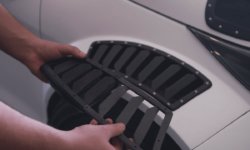Thanks to advances in resin 3D printing technologies, additive manufacturing is becoming a staple technology in the field of dentistry — both in dental practices via “chair-side” 3D printing and in off-site dental laboratories for more demanding print jobs.
Dental practices and laboratories can today use 3D printers for a wide variety of applications, from the printing of models to make thermoset dental aligners, to the direct 3D printing of full dentures. Not only does this make life easier for dental professionals, but it also results in tangible benefits for patients: tailored dental solutions are now more effective and affordable than ever.
Although resin 3D printing (Stereolithography, DLP) is the frontrunner in dental additive technology, there are also future possibilities in metal additive manufacturing and ceramic 3D printing.
Current leaders of dental 3D printing technologies include Formlabs, 3D Systems, and Stratasys, and there are also many startups in the segment.
Of course, 3D printers don’t do everything on their own. The introduction of dental 3D printing technologies goes hand in hand with other digital solutions, including new dental CAD solutions and dental 3D scanners used to capture a patient’s dental anatomy. These three systems are usually used together to create the end product.
This guide looks at some of the most important applications of 3D printing in dentistry.
3D printed dental aligners
The dental 3D printing application with the biggest popular impact is, by some distance, 3D printed models for the creation of patient-specific dental aligners. Dental solutions like Invisalign use resin 3D printers to fabricate accurate models of a patient’s teeth, and these models are then used to make clear aligners.
This application is an example of indirect 3D printing: the 3D printed object is not the final product but is used to create the final product. (The 3D printed object is ultimately discarded.)
For the product of dental aligners, dental professionals first obtain a scan of the inside of a patient’s mouth using a desktop or intraoral scanner. The scan data is turned into a CAD model, which is edited to reflect desired teeth movement. The finished design is then 3D printed using technology like Stereolithography.
This 3D printed model — a copy of the patient’s teeth complete with the recommended adjustments — is then placed in a dental thermoforming machine, in which a clear aligner is tightly wrapped around the printed model to create the patient-specific final product.
Aligners are cleaned and polished before being delivered to the patient.
3D printed dentures
Dental 3D printers can also be used for direct 3D printing, in which the printers fabricate the final product with no further manufacturing steps necessary.
An example of direct printing is the 3D printing of full dentures: removable plastic frames fitted with full sets of teeth, given to patients with no remaining teeth of their own. Dentures are usually printed in two stages: the base, which touches the patient’s gums, should be made from a softer resin than the teeth, which need to be rigid and strong.
Since 3D printed dentures will be used inside a patient’s mouth, they must be thoroughly polished to remove any rough or sharp imperfections.
3D printed casting patterns
Another indirect dental 3D printing application is the 3D printing of patterns for casting. These patterns can be used to cast items like crowns, bridges, and copings.
Dental technicians have used casting since long before 3D printing came around, but 3D printing can streamline the process and produce an improved end product. Patterns are 3D printed then cleaned up, then used in an investment casting process.
During the burnout stage of the process, the 3D printed pattern is burned away, leaving a cavity that can then be filled with casting material.
3D printed surgical guides
One of the most important uses of 3D printing in the medical industry is the creation of 3D printed surgical guides to assist surgical procedures, and the same concept is applied in the field of dentistry.
In dental procedures, surgical guides are used to ensure that, for example, implants are fitted in exactly the right place. They are applied to the patient’s mouth prior to the procedure and removed during or after.
Specific guide types include drill guides and drilling templates.
Most surgical guides are designed using 3D scan data, which is then configured into a suitable CAD design. The digital guide design is printed, then polished, and finished so it is ready for oral use.
3D printed dental models
3D printing can be used for the direct fabrication of 3D printed full arch models or crown and bridge models with removable dies. Such models allow dentists to plan denture restorations and other procedures.
Scans are obtained from a patient’s mouth, then turned into a CAD file. Dental-specific CAD applications allow for the automatic creation of removable dies within the software.
The file can then be printed in a rigid resin before washing, curing, and support removal.
3ERP offers a range of high-quality 3D printing services, including Stereolithography, FDM (plastic), SLS (nylon), and SLM (metal).







